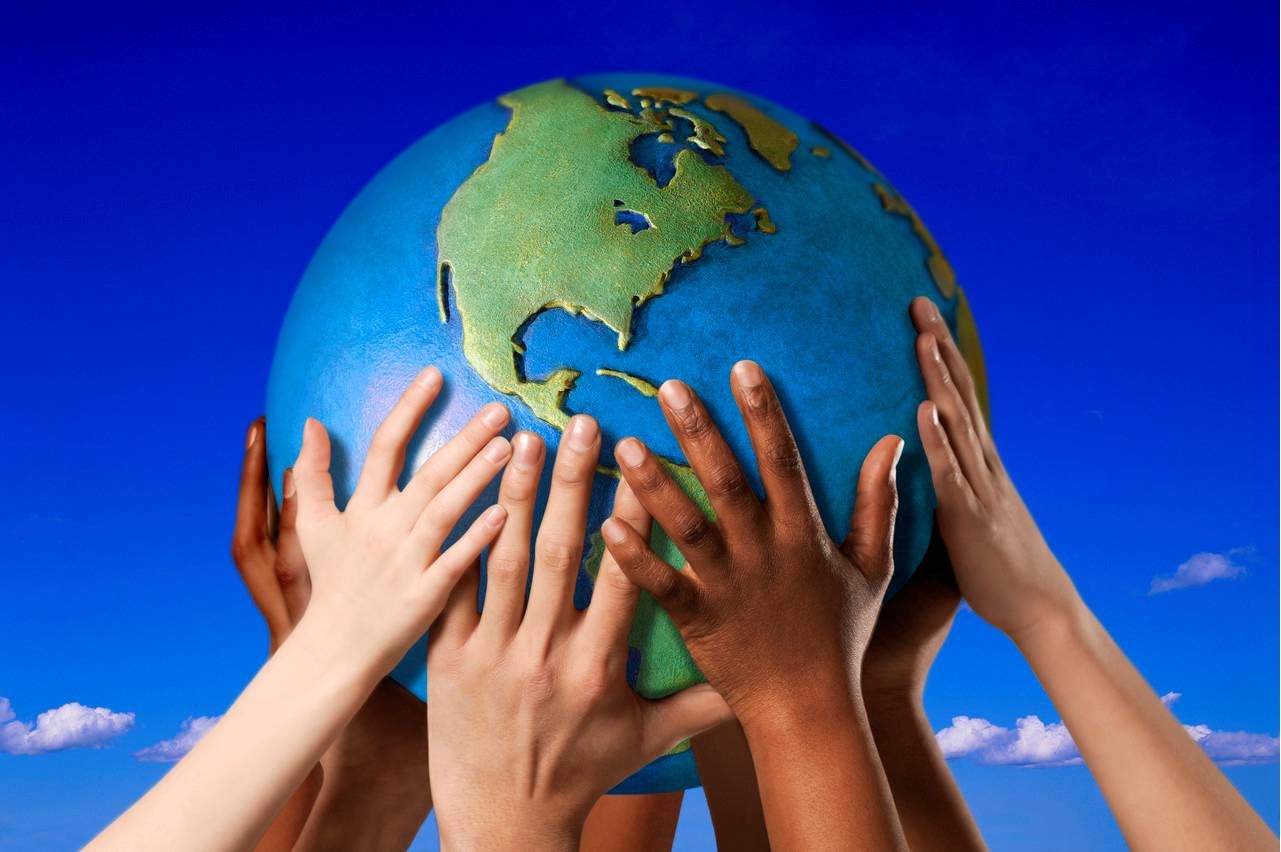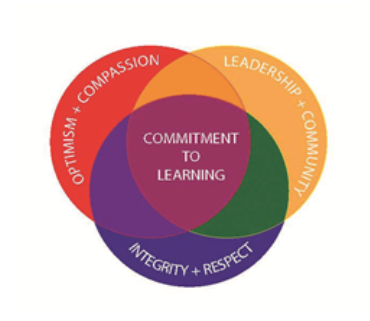
In my early years of teaching, I used to think international-mindedness happened as a result of the diversity present in the classroom. I viewed it more as differences in food, flags, festivals (traditions), language, entertainment, and recreation. In my 10 years abroad I’ve come to learn that these are examples of culture and these attributes of culture do not necessarily translate to developing international-mindedness.
I hate to admit that my understanding of what it meant to be internationally-minded was simple in nature and based on things that were more observable, and not in the deeper ways in which people’s beliefs and values are different and also the same. I’ve learned It’s more about an attitude and an openness to see the world and its events from multiple perspectives.
EARJ is classified as an American international school and yet how internationally-minded are we? In what ways does our community strive to exemplify what it means to be internationally-minded? I ask these questions not to negate a well-deserved 83 year history of excellence, but to engage us in conversation about the benefits of being internationally-minded and the challenges that come with it in an ever changing, chaotic world. As educators, we know we want to develop international-mindedness in our students, but this pursuit should actually involve the entire community of students, teachers, staff, and parents.
The International Baccalaureate (IB) defines International mindedness as possessing certain attributes and approaches to learning. An internationally minded learner:
-
is a competent communicator (multilingual);
-
is open-minded and knowledgeable;
-
is a caring and principled thinker;
-
uses his or her curiosity and research skills to inquire about the world;
-
thinks and reflects critically about opportunities and challenges;
-
takes action for positive change;
-
takes risks to further self-development and understanding of others.
(Boix Mansilla and Jackson 2011; Oxfam 2015; Singh and Qi 2013; UNESCO 2015).
For students who participate in one or several of the IB programmes, they are exposed to these attributes and approaches multiple times during the course of their educational journey. They learn how to use appropriate skills to find answers to their questions. They develop ownership of their own learning and in their relationships with others so they have the opportunity to practice the attributes in real time.
When I think about how best for EARJ to infuse International mindedness into the ethos of the school, I like to think about what I would want an EARJ high school graduate to know about himself/herself as a learner and the difference he/she wants to make in the world. If we work backwards from “that graduate” then we should be able to support that vision and build into their learning journey, opportunities to develop the attributes of an internationally-minded person, starting all the way back in their preschool years.
The development of international-mindedness takes time, patience, and commitment to a larger vision. At EARJ, find your path inspires us to support our students so that their attributes and approaches to life exemplify an internationally-minded citizen of the world.
Doreen Garrigan
Gávea Lower School Principal

One of the things I really enjoy is to work with people younger than me. Not just 2 or 3 years younger, but from a different generation – I have great friends who were my interns or trainees in the past that have become amazing professionals. Apart from the fact that I loved to learn and to hear their fresh ideas, I found it rewarding to push them to take risks, to make them feel confident to discover their passions.
I believe passion is a game changer. When you feel good about someone (no matter if it’s a Lower School crush, a High School sweetheart, or the love of your life), you want to make a good impression, say the right words, make the right moves. If it’s a passion for what you do, time seems to fly. There’s this strange energy, this fuel that keeps you moving and gets nothing but the best out of you.
Passion is not something you bump into everyday, though. You need to feel inspired, to be open, to “practice new”. Practice builds confidence and also helps you learn that although you will not thrive everytime, it is worth taking the risk.
So a few days ago I received the cutest video from the Lower School team, with kids trying new things like doing pirouettes, surfing, skaterolling. They were taking risks, experimenting things they never did before, feeling the rush. It was part of their exploration of the PYP Learner Profile Attributes. At some point, they would explain why they considered themselves risk takers, feeling proud about themselves no matter if they went well or not. They were proud because they tried. They were feeling the grounds of a new activity that could lead or not to a new passion. Most importantly, they were developing their confidence.
At EARJ, students are inspired to take risks, to try new activities in sports, arts, social responsibility, leadership, and so many other things. They may or may not quickly connect with some of these activities, but what will echo in the future, either in their personal or their professional lives, is that they developed their confidence and were always inspired in trying something new.
Inspiration ignites passion. Passion leads to purpose. Purpose defines the path. It’s no surprise that at EARJ, we are passionate about our purpose to help our students find their path.
Cristina Conforto
Director of Advancement
EARJ’s Purpose, Mission, Vision, and Values paint a powerful picture of how we see our school now and what our collective ambitions are for the future. They provide a framework for the type of physical, social and intellectual learning environments we wish to provide to our school community.
In a continuing desire to fulfill our mission and vision and to instill these values in our students, some of our teachers are currently participating in a four-week Mindfulness and Well-Being programme aimed at further developing these core values in our students and identifying practical strategies for student success. By incorporating findings from emotional intelligence and neuroscience, teachers are working to foster creativity, academic success, compassion, empathy and greater happiness in our students.
Additional goals of the mindfulness and well-being programme are to link research to the implementation of the Approaches to Learning Skills throughout EARJ’s developing IB continuum of academic programmes.

So, what has been learned so far? That, among other things, there appears to be a common misconception regarding happiness and how we achieve it. Advertising and marketing campaigns would have us believe that an individual’s level of happiness is measured through their acquisition of material goods. Others pursue goals only to achieve them and realize that they didn’t provide them with the level of happiness that they were hoping for.
If we are always looking for the next, best thing, we may potentially find ourselves unfulfilled in a never ending pursuit of happiness. But, what if we work towards achieving happiness now, and use this state of mind to help us reach our goals? Are there strategies to help us do so? What are the benefits?
The truth is that happiness is within everyone’s grasp and it is something that can be developed through practice. The benefits? Happy people have more friends, are more productive, and are better decision makers and problem solvers, to name a few. The Greater Good Science Center at the University of California, Berkeley, has collected many practices, including those on happiness, that closely align with the EARJ’s Core Values of Integrity and Respect, Leadership and Community, Optimism and Compassion, and Commitment to Learning. The website is not exclusively for educators and includes resources/strategies on parenting, that are well worth the look.

So, if happiness is within our grasp, why is it so elusive? In his book on Hardwiring Happiness, Dr. Rick Hanson describes how the brain has a negativity bias that, “makes it like Velcro for negative experiences and like Teflon for positive ones”. Our “stone-age” brains have the ability to leave us feeling stressed and inadequate unless we apply 21st century practices that will allow us to feel at ease and fulfilled. One of these practices is Taking in the Good in which we deliberately internalize positive experiences in our minds by Having a positive experience, Enriching it, Absorbing it and Linking the positive and the negative.
By focussing on the good in our experiences, the good in people, and the good in life, we are choosing positivity and in doing so, we are choosing to work towards achieving happiness in our lives.
Scott Little
Barra Upper School Principal




